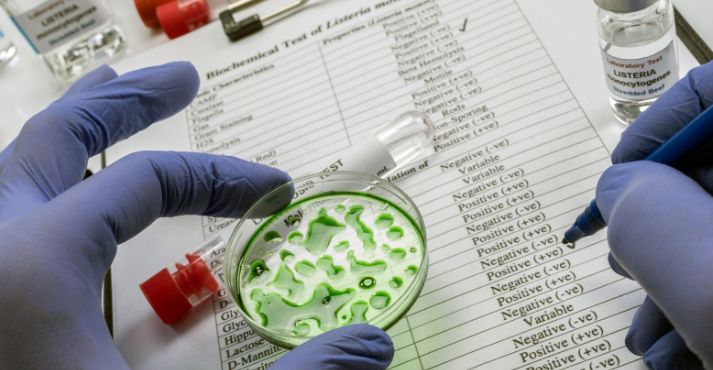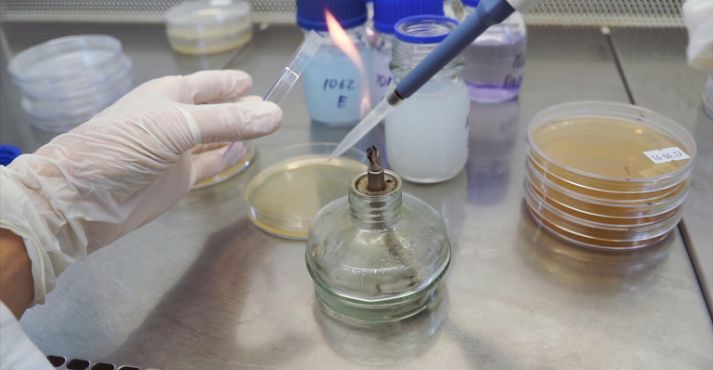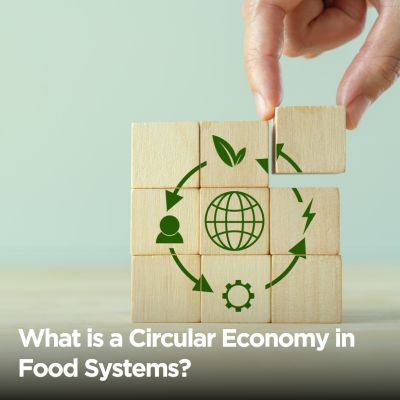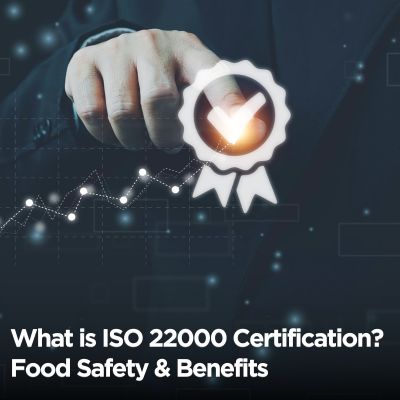Explore the multifaceted issue of food contamination, understanding its various aspects, including causes, types, and preventive measures.
Food contamination is a complex issue that demands attention and comprehension. Recognizing the causes, identifying different contaminants, and acknowledging preventive measures are crucial to understanding this concern.
Contaminants, whether microbial agents or chemical substances, find pathways into our food, posing potential health risks. Recognizing these sources is crucial for a comprehensive understanding of the problem and for developing effective solutions.
Prevention is pivotal in safeguarding our food supply, requiring collaborative efforts from consumers, producers, and regulatory bodies.
Identifying and implementing measures to mitigate contamination risks empowers us to make informed choices, contributing to a safer and healthier food environment.
Understanding Food Contamination: Safeguarding Our Plates

Food contamination is a critical issue that jeopardizes the safety and quality of our food. Let’s break down the complexities of this topic, focusing on its definition, harmful sources, and the microorganisms that can compromise the integrity of our meals.
1. Defining Food Contamination:
Food contamination refers to the unwanted presence of harmful substances or microorganisms in our food. It threatens the safety and quality of the food we consume daily.
2. Harmful Sources of Contamination:
- Chemical Contaminants: Pesticides, additives, and preservatives can seep into food during various stages, posing health risks.
- Biological Contaminants: Bacteria, viruses, and parasites can multiply if food is mishandled or undercooked, leading to foodborne illnesses.
- Physical Contaminants: Foreign objects like glass, metal, or plastic can unintentionally find their way into food during processing or packaging.
3. Microbial Contamination:
- Bacterial Presence: Pathogenic bacteria like Salmonella and E. coli can thrive in improperly stored or undercooked food, causing severe illnesses.
- Viral Contamination: Viruses such as norovirus can spread through contaminated food, especially in unhygienic handling conditions.
- Parasitic Threats: Parasites like Cryptosporidium or Giardia can contaminate water and fresh produce.
4. Ensuring Food Safety:
- Proper Handling: Following hygiene practices during food preparation, storage, and serving is crucial.
- Cooking Adequately: Thorough cooking eliminates harmful microorganisms, reducing the risk of contamination.
- Regular Testing: Rigorous testing for contaminants in food products ensures compliance with safety standards.
- Transparent Labeling: Clear and accurate labeling helps consumers make informed product choices.
Causes of Food Contamination
Food contamination stems from various sources, each posing unique challenges to the integrity of our food. Let’s dive into the diverse causes, covering biological, chemical, and physical factors that can compromise the safety and quality of our food.
1. Biological Factors:
- Microbial Intruders: Bacteria, viruses, and parasites find their way into food through unhygienic handling, undercooked items, or contaminated water sources.
- Cross-Contamination: Improper separation of raw and cooked foods can transfer harmful microorganisms, enhancing the risk of contamination.
2. Chemical Factors:
- Pesticide Residues: Chemicals used in agriculture may leave residues on fruits, vegetables, and grains, impacting the safety of these foods.
- Food Additives: Improper use or excessive amounts of food additives can introduce unwanted chemicals into the food supply chain.
- Food Packaging Materials: Materials containing harmful chemicals can leach into food, especially when exposed to heat or prolonged storage.
3. Physical Factors:
- Foreign Objects: The presence of foreign materials like glass, metal, or plastic during food processing, packaging, or handling can pose a physical threat.
- Contaminated Water: Water used in food processing or irrigation, if contaminated, can introduce physical impurities into food.
Understanding the Impact on Food Quality:
- Taste and Odor Alterations: Chemical contaminants may alter the taste and odor of food, making it unpalatable.
- Nutritional Degradation: Some contaminants can impact the nutritional value of food, reducing its health benefits.
- Safety Concerns: Biological contaminants, if not addressed, can lead to foodborne illnesses, jeopardizing consumer health.
Ensuring Food Quality
- Stringent Testing Procedures: Regular testing for contaminants helps identify and eliminate compromised food products.
- Educating Stakeholders: Training food handlers and consumers on proper food handling and consumption practices minimizes the risk of contamination.
- Transparent Labeling: Communicating information about food products’ origin, processing, and content empowers consumers to make informed choices.
Types of Food Contamination

Food contamination is a pervasive issue with far-reaching consequences for our health. Let’s find out the various types of contamination, shedding light on the distinct ways food can be compromised.
1. Microbial Contamination:
- Bacterial Intruders: Harmful bacteria such as Salmonella, E. coli, and Listeria can increase in food, causing foodborne illnesses.
- Viral Threats: Viruses, like Norovirus and Hepatitis A, pose risks when present in contaminated food.
- Parasitic Infestations: Parasites such as Giardia and Cryptosporidium may contaminate food, leading to gastrointestinal issues.
2. Chemical Contamination:
- Pesticide Residues: Chemicals from pesticides used in farming can linger on fruits, vegetables, and grains.
- Food Additives: Improper use or excess additives can introduce unwanted chemicals into the food supply.
- Contaminated Water: If water used in food processing is tainted, it can bring harmful chemicals into the food chain.
3. Cross-Contamination:
- Interference of Allergens: Transfer of allergens from one food to another during processing or preparation can pose severe health risks.
- Mixed Storage: Storing raw and cooked foods together increases the risk of cross-contamination.
- Unclean Utensils: Using the same utensils for different food items without proper cleaning can spread contaminants.
Consequences of Each Type:
- Microbial Contamination can lead to foodborne illnesses, ranging from mild gastroenteritis to severe infections.
- Chemical Contamination: This may alter the taste, odor, and certain types of nutrients in food, posing long-term health risks.
- Cross-Contamination: Allergic reactions, foodborne illnesses, and compromised food safety.
Mitigating Cross-Contamination Risks:
- Separate Food Storage: Keep raw and cooked foods separate in storage to prevent cross-contamination.
- Clean and Sanitize: Regularly clean utensils, cutting boards, and surfaces to minimize the risk of spreading contaminants.
- Allergen Awareness: Clearly label and segregate allergenic ingredients to prevent accidental exposure.
Consequences of Food Contamination
Food contamination casts a looming shadow over our well-being, with far-reaching implications that extend beyond the plate. Let’s dive into the severe consequences of food contamination, finding the risks, economic fallout, and the profound impact on public health.
1. Risks of Foodborne Illnesses:
- Gastrointestinal Distress: Contaminated food often harbors harmful bacteria, viruses, or parasites, leading to nausea, vomiting, and diarrhea.
- Severe Infections: In some cases, foodborne pathogens can cause severe infections, threatening life, especially for vulnerable populations.
2. Economic Impact on the Food Industry:
- Product Recalls: Contamination incidents force businesses to recall products, resulting in substantial financial losses.
- Brand Damage: Consumer trust takes a hit, impacting affected businesses’ brand reputation and market standing.
- Legal Ramifications: Businesses may face legal action, fines, and lawsuits, further compounding financial repercussions.
3. Safeguarding Public Health:
- Medical Costs: Treating foodborne illnesses incurs significant medical costs for individuals and healthcare systems.
- Lost Productivity: Absenteeism from work due to illness affects workforce productivity, contributing to economic losses.
- Long-Term Health Effects: Some foodborne illnesses can lead to chronic health conditions, burdening affected individuals.
Mitigating the Impact:
- Strict Food Safety Standards: Implementing and adhering to stringent food safety protocols minimizes the risk of contamination.
- Surveillance and Testing: Regular monitoring, testing, and surveillance help identify and address potential contamination early.
- Education and Awareness: Educating consumers, businesses, and food handlers about safe food practices fosters a culture of responsibility.
Preventing Food Contamination: Safeguarding Our Health
In the complex landscape of food safety, preventive measures play a pivotal role in ensuring the well-being of consumers.
Let’s explore strategies to combat food contamination, foster hygiene practices, implement effective food storage techniques, and adhere to crucial regulatory measures.
Hygiene Practices: The First Line of Defense
One of the primary measures to prevent food contamination revolves around promoting rigorous hygiene practices.
Ensuring that food handlers, from chefs to kitchen staff, maintain impeccable cleanliness significantly mitigates the risk of harmful microorganisms infiltrating the supply chain.
Effective Food Storage Techniques: Preserving Quality and Safety
Proper food storage is a cornerstone in the battle against contamination. Implementing effective storage techniques, such as maintaining appropriate temperatures and separating raw and cooked items, contributes to preserving the food.
Regulatory Measures: Upholding Stringent Standards
Regulatory guidelines form a protective framework within the food industry. Adhering to these measures ensures that food establishments follow stringent standards, conduct regular inspections, and promptly address any potential sources of contamination.
This safeguards public health and instills consumer confidence in the food supply.
Importance of a Robust Food Safety System
At the heart of these preventive measures lies the overarching concept of a robust food safety system. This system integrates hygiene practices, storage protocols, and regulatory compliance into a comprehensive approach, creating a shield against food contamination.
Establishing and maintaining such a system is imperative for safeguarding public health and maintaining the integrity of the food industry.
Industry Standards and Regulations
In the complex landscape of food safety, industry standards and regulations serve as the guiding principles that underpin the integrity of the food supply chain.
Let’s explore the existing landscape, examining these standards and emphasizing the pivotal role of regulatory bodies in ensuring compliance.
Industry Standards: Benchmarking Excellence
Industry standards are the benchmarks that define excellence in food safety. These standards encompass a spectrum of criteria, from hygiene practices to storage protocols, to establish a uniform and robust framework that food establishments must adhere to.
Compliance with these standards is not just a legal requirement but a commitment to delivering safe, high-quality food to consumers.
Regulations: Safeguarding Public Health
Regulations within the food industry serve as a protective shield for public health. These guidelines are crafted by regulatory bodies and set forth the rules and expectations for food establishments.
They cover many aspects, including food handling, storage, labeling, and overall hygiene practices. Adherence to these regulations is crucial for preventing foodborne illnesses and maintaining consumer trust.
Food Safety Compliance: A Collective Responsibility
Ensuring food safety compliance is a collective responsibility shared by food producers, distributors, and retailers.
The compliance framework, often outlined by regulatory bodies, establishes a harmonized approach to risk mitigation. This involves routine inspections and food safety audits, along with measures to address deviations promptly.
Regulatory Bodies: Guardians of Food Integrity
At the forefront of enforcing industry standards and regulations are regulatory bodies. These entities are pivotal in overseeing compliance, conducting inspections, and taking corrective actions when necessary.
Their vigilant efforts contribute to the food supply chain’s overall safety and quality assurance.
Ensuring Adherence to Industry Guidelines: A Holistic Approach
Adherence to industry guidelines is a holistic approach that involves continuous improvement and a commitment to upholding the highest standards.
By embracing and implementing these guidelines, food establishments meet legal requirements and contribute to building a resilient and trustworthy food ecosystem.
Impact of Food Contamination on Consumers and the Economy

In the intricate web of our food system, the repercussions of contamination are far-reaching, affecting both consumers and the broader economy.
Let’s delve into the nuanced aspects of how different types of contamination send ripples through health, trust, and economic stability.
Impact on Consumers: A Health Dilemma
When it comes to food, the stakes are high for consumers. Different types of contamination, be it microbial, chemical, or through cross-contamination, pose a direct threat to consumer health.
From foodborne illnesses to long-term health implications, the impact can be profound. Consumers face physical risks and the psychological toll of uncertainty about the safety of what they consume.
Economic Ramifications: A Ripple Effect
The economic consequences of food contamination are like ripples in a pond, extending far beyond the immediate incident.
Businesses in the food industry, from producers to distributors and retailers, face financial setbacks due to recalls, legal implications, and damage to their reputations. The economic stability of entire communities linked to the food supply chain can be jeopardized.
Trust Erosion: A Fragile Thread
Trust is the cornerstone of any food system. When contamination occurs, it erodes the delicate thread of trust that binds consumers to producers and the broader food industry.
Restoring this trust is challenging, requiring transparent communication, robust safety measures, and a commitment to preventing future incidents. Trust, once broken, takes time to rebuild.
Health Implications: Beyond Immediate Effects
The impact of food contamination on consumer health extends beyond the immediate symptoms of foodborne illnesses.
Long-term health implications, such as chronic conditions and compromised immune systems, can result from exposure to contaminants. This burdens individuals, contributes to increased healthcare costs, and strains public health resources.
Navigating the Way Forward: Mitigating Contamination Risks
In these challenges, proactive measures are essential to mitigate contamination risks. A comprehensive approach is needed, from stringent quality control in food production to transparent communication with consumers.
Regulatory bodies are crucial in setting and enforcing standards safeguarding consumer health and economic stability.
Strategies to Prevent Food Contamination in Establishments
Ensuring food safety in establishments is paramount, requiring a concerted effort in staff training, impeccable sanitation practices, and unwavering adherence to rigorous food safety protocols.
Let’s explore effective strategies to safeguard against the risks of food contamination in food establishments.
1. Training the Guardians: Staff Education for Food Safety
The first line of defense against food contamination is a well-informed and trained staff.
Establishments must invest in comprehensive training programs that educate employees about the importance of food safety, proper handling techniques, and the identification of potential risks.
This empowers staff members to become guardians of food integrity, equipped to detect and address issues proactively.
2. Sanitation as a Shield: Implementing Rigorous Cleaning Practices
Sanitation practices form the frontline defense against contaminants. Regular and thorough cleaning routines must be implemented in kitchens, storage areas, and dining spaces.
This includes disinfection of surfaces, utensils, and equipment. Establishments should establish clear protocols for cleaning schedules, emphasizing the importance of maintaining a hygienic environment at all times.
3. Protocols Set in Stone: Adherence to Food Safety Standards
Strict adherence to food safety protocols is non-negotiable. Establishments must establish and enforce standard operating procedures that align with industry standards and regulations.
This includes guidelines for food storage, temperature control, cross-contamination prevention, and overall hygiene. Regular audits and inspections can ensure continuous compliance.
4. Technology as an Ally: Implementing Smart Solutions
Technology can be a powerful ally in preventing food contamination in the digital age. Establishments can leverage tools like temperature monitoring systems, inventory management software, and automated cleaning schedules.
These innovations enhance efficiency and contribute to maintaining a safe and contamination-free environment.
5. Empowering Consumers: Transparent Communication
Transparent communication with consumers is an essential component of preventing food contamination.
Establishments should openly share information about sourcing practices, quality control measures, and any steps to ensure food safety. This builds trust and empowers consumers to make informed choices about where they dine.
6. Continuous Improvement: Learning from Incidents
In the event of any contamination incident, establishments should view it as an opportunity for learning and improvement.
Conducting thorough investigations, identifying root causes, and implementing corrective actions contribute to a culture of continuous improvement. This proactive approach strengthens defenses against future incidents.
Conclusion
In conclusion, understanding and addressing the issue of food contamination is paramount for the safety of our global food supply.
The key takeaways emphasize the importance of awareness, vigilance, and collaborative efforts from all stakeholders involved in the food industry.
By being aware of the causes and types of food contamination, individuals can make informed choices to protect themselves and their communities.
Vigilance at every stage of the food supply chain, from production to consumption, is crucial in preventing contamination and ensuring food safety.
Future trends in food safety will likely focus on collaborative measures, advanced technologies, and global initiatives. Together, we can work towards a safer and more secure food environment where everyone can access nutritious and uncontaminated food.





























